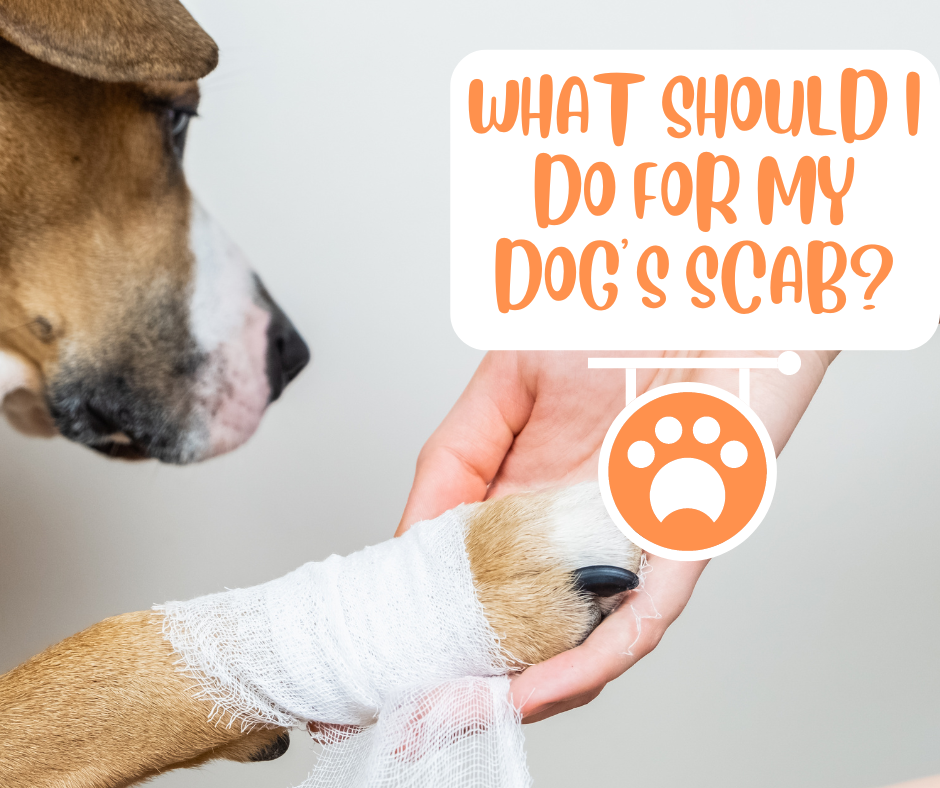 I think sometimes people get frustrated with me because I don’t answer their direct question about a scab they notice on their dog. That’s because I have answer the question that led to the question. =) Let me explain.
I think sometimes people get frustrated with me because I don’t answer their direct question about a scab they notice on their dog. That’s because I have answer the question that led to the question. =) Let me explain. x
So, with anything having to do with scabs, we have to look at a little bit of physiology. Consider this: If there’s a scab, it means the dog is no longer scratching – because the skin has had time to heal and make a scab. Does that make sense? If they’re scratching, the skin is red, oozing, etc. It’s when the scratching stops that the skin has time to heal and make a scab.
So whenever you see a scab, you can be confident that the skin is now healing underneath the scab. There is nothing you need to put on the scab, once a scab has formed.
The time when we need to do some thing or put some thing on “it” is, when he’s chewing, scratching, or some other form of self mutilation, that ultimately leads to the presence of the scab.
Think about it from the perspective of a three year-old child. Mosquito bites itch to high heaven! A little kid can’t make himself stop scratching it. Especially in the middle of the night. So he scratches until it’s bloody. Which temporarily makes him cry. But finally, Mom swoops in to put something on the “itch,” the relief is there and now it starts to heal… and — of course — form a scab.
Well, what did Mom put on the mosquito bite? Maybe she washed it. Maybe she put some kind of a hemp oil based ointment. Or a calendula ointment. Or maybe an ozone ointment. Believe it or not, there are a ton of quality natural options that you can put on itches and bumps.
Some people make dilute spray of citrus or mint essential oils. (Some people freak out about the possibility of an essential oil on a dog’s or cat’s skin. I don’t, as long as it’s not applied “neat”, and as long as it’s not tea tree or wintergreen.)
Another option that can sometimes help during the itching phase is a rinse. You can make a mixture of water (1 quart) with borax (1/4 cup) and peroxide (1 pint) and keep the bucket in the sink. When your precious four-legged gets itchy, dunk a washcloth in the solution and slop it on the itchy area. Don’t wash it off. Let it drip dry. It just might take away some of that itch.
What makes this mixture work? Borax and peroxide, each, individually, are mildly antibacterial. How many people do you know put peroxide on a wound? Nearly everyone. They do this because it makes it bubble. The bubbles means that the peroxide is killing superficial bacteria (called staph – staphylococcus – by the way, they naturally live on the skin) on the skin. Borax is, well… soap-like. Another crazy thing: the first thing we do when we get a wound is we wash it. With soap. Thus… borax.
So, if you have noticed that your four-legged baby has scabs, the next step isn’t an ointment, but a fact finding mission. We need to identify what’s leading to the scabs. We need to catch things a bit earlier, when the chewing, itching, and scratching begin. (That one’s up to your powers of observation – sorry, I can’t catch that for you. )
x
So let’s try to catch the reason for the scabs before the scabs, and let’s try to work on the underlying reason.
